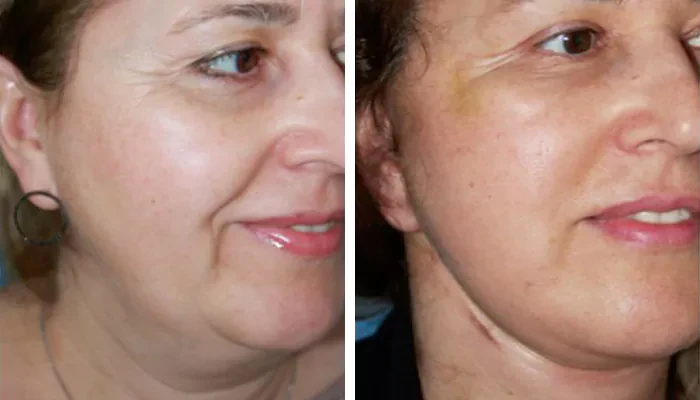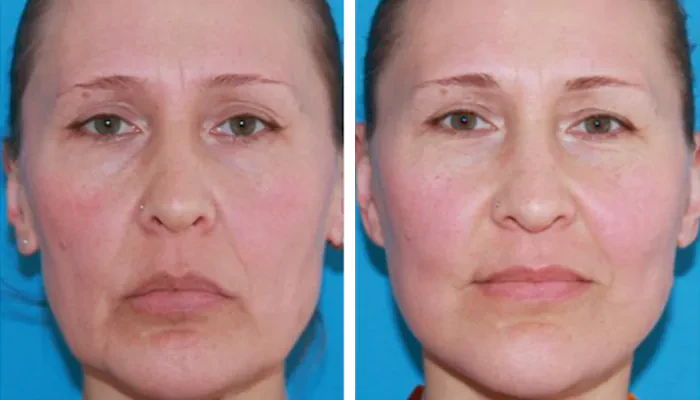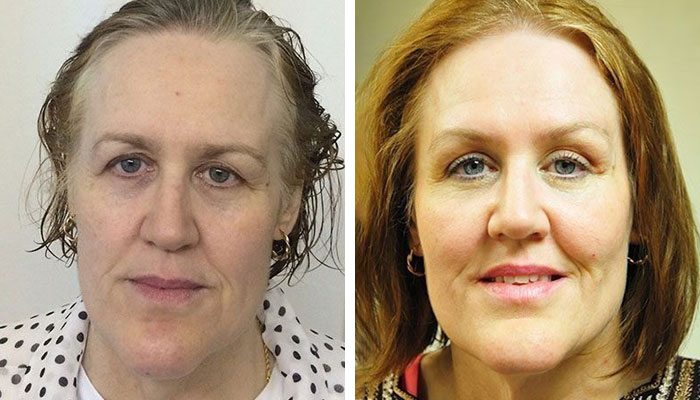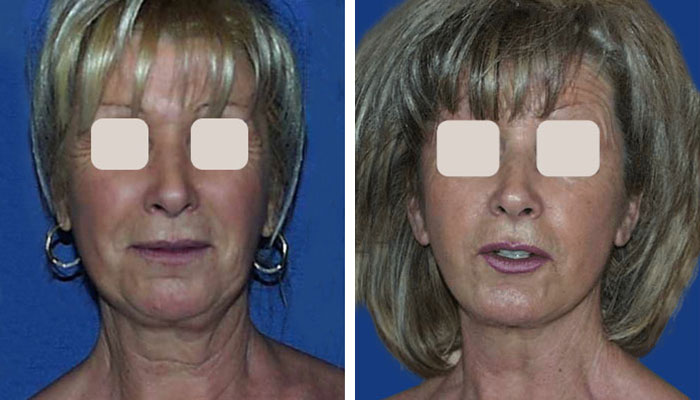What is a facelift?
Facelift, commonly known as rhytidectomy, is a cosmetic surgery aimed at creating a younger look in the face. The surgery can lift up and pull back the sagging skin making folds of skin on the cheeks and jawline tighter and smoother.
A neck lift is often performed as part of a face-lift. It decreases fat and lifting up and pulling back droopy skin on the neck.
Facelift can be performed for other reasons, such as removing or reducing scars resulting from burns or wounds in the face.
Facelift doesn’t correct problems caused by sun exposure like fine lines and wrinkles. These issues are addressed by non-surgical procedures improving the quality and look of the skin.
Facelift can be performed with local or general anesthesia in a hospital or under sedation on an outpatient basis, meaning that you do not need to stay in the hospital overnight. It is a relatively safe surgery with some serious risks like any surgery, but the risk will minimize if it is performed by an experienced qualified surgeon.
Who is a good candidate for facelift?
Facelift is mainly done to hide the visible signs of aging in the face such as sagging skin, wrinkles and fine lines. These signs might appear at 30s or earlier. Therefore, people at age 30s up to 80s who want to have a younger face appearance are good candidates for facelift.
To be a good candidate for a facelift, you should:
- Be a non-smoker or able to stop smoking several weeks before the date of the surgery
- Have good quality facial skin
- Have a clear and comprehensive vision of the results of the surgery
- Have good physical and mental health with no medical condition preventing you from undergoing the surgery or affecting the healing such as hypertension and blood circulation disorders.
At what age can facelift be done?
There is no specific age to undergo the facelift, but the average age is 40s and 50s. Older people can have it and there is no upper limit if they are physically fit and don’t have medical conditions that prevent undergoing the procedure.
What should be done before facelift procedure?
Before the non-surgical facelift procedure, you should:
- Stop smoking for several weeks before the procedure
- Not remove facial hair several weeks before the session
- Not apply cosmetics and creams, and not direct expose to the sun for several days before the surgery
Before a facelift surgery, you should visit the specialized surgeon because an initial consultation is the first step. The surgeon will examine the structure of your face and the laxity of your skin to determine the appropriate facelift for you. Finally, he/she will give some instructions including:
- Stop smoking at least 6 weeks before the surgery
- Eat healthy meals
- Be dehydrated, so you should drink a sufficient amount of water, 8 glasses a day, at least 6 weeks before the operation
- Stop blood thinning medicine such as ibuprofen and aspirin, two weeks before the surgery
- Undergo some medical tests including blood tests and ECG (if your age is over 40) and other tests prescribed by the surgeon depending on your needs and medical conditions
- Stop eating and drinking after midnight the day before the surgery
What are non-surgical facelift procedures?
There are many non-surgical facelift approaches, including:
- Laser facelift
- HAIFU Facelift
- Facelift with Botox
- Facelift with fillers
- Facelift using the golden needle technique
The main non-surgical facelift procedures are described in below.
Laser facelift
Day after day, the use of lasers in facelift increases because it is a safe method and does not require prior preparation. The doctor applies a local anesthetic to the face, and after the anesthetic takes effect, he/she begins to direct laser beams on wrinkles and sagging skin. The heat generated by these rays leads to melting fat and stimulating cells to produce collagen that is beneficial to the skin. Collagen increases skin vitality and hiding wrinkles.
A laser face-lift session takes from an hour to an hour and a half. 3 or 4 sessions with 3- to 6-week intervals between each two sessions is needed. Using the creams prescribed by the doctor is necessary during the first week after each session.
Ultrasound facelift
Highly focused ultrasound waves can penetrate the layers of the skin and reach the deep cells and tissues of the skin. The heat generated by these waves dissolves fat and stimulates the cells to increase the secretion of collagen. Collagen restores and increases the vitality and smoothness of the skin.
Before performing this procedure, it is necessary to consult with a specialized doctor to ensure that this procedure is appropriate for the case.
In ultrasound facelift session, the surgeon applies a suitable ointment to the face, and then directs the high-focus ultrasound waves using a manual handle. In this way, wrinkles can be eliminated in one session. Ultrasound facelift does not require many sessions, rest intervals and recovery period. The results appear after a short period and last for a long time. This procedure is painless and does not require local anesthesia.
Botox facelift
Botox is a toxic nerve substance that inhibits muscles and reduces their contraction, which leads to softening the skin in the injection area.
Botox is widely used in facelift to reduce wrinkles and tighten the skin around the eyes, mouth, nose, between the eyebrows and in the forehead. It is a very easy method in which the doctor injects Botox in appropriate areas in the face.
Botox works to inhibit and relax the muscles, so the skin in this area becomes taut and smooth. The use of Botox to lift the face is one of the most common and easy methods. It does not usually require local anesthesia.
The Botox injection process does not take more than half an hour. After the procedure, it is possible to go to your work and practice the usual daily activities. The results of the injections appear quickly but do not last more than one year.
Facelift with fillers
Fillers are special substances that are injected under the skin to get rid of signs of aging. This procedure varies according to the filler used, and each filler has its own uses, advantages and disadvantages.
1- Hyaluronic acid filler
Hyaluronic acid is a substance found in the human body. Its function is to maintain skin freshness and reduce wrinkles resulting from aging. It is used to fill in the gaps and smooth the skin around the eyes, eyelids and lips. However, its effect is temporary and lasts from 6 to 12 months.
2- Calcium hydroclimate filler
This filler consists of small calcium particles placed in a mold of gel. This filler is thicker and can fill a larger volume and tighten facial wrinkles more. It can be used to tighten and plump the cheeks, define and tighten the jawline.
3- Lactic acid filler
This filler differs from the previous types in that it does not fill in the gaps, but rather it stimulates the secretion of collagen, which contributes to filling the gaps and lift the face gradually. The effect of two or three injections of this filler lasts for two years.
4- Polymethyl methacrylate filler
It consists of small microscopic balls that are added to collagen. Its effect lasts for 5 years. It is not recommended to be used as a first choice.
Types of facelift surgery
Facelift surgery calcifies in the following categories according to the targeted area of the face or to the used technique:
- Traditional surgical Facelift or the SMAS lift
- Deep plane facelift surgery
- Mid Facelift
- Mini facelift
- Brow lift or forehead lift surgery
- Thread facelift surgery
- One stitch facelift surgery
The main facelift approaches are described below.
Traditional Facelift or The SMAS lift
Traditional facelift is the effective extensive facelift. It can eliminate the moderate to severe sings of aging and give the face younger appearance, so it is the most popular facelift surgery.
Traditional facelift tightens the skin in the face and the neck, brings back youthfulness to cheeks, removes wrinkles, eliminates folds and droopy skin.
How to perform traditional facelift
traditional facelift is performed under general anesthesia, local anesthesia or sedation.
After anesthesia, the surgeon makes an incision that starts from the temple along the hairline in front of the ear, goes around it from below and behind, and extends along the hairline ending behind the neck. Then he/she separates the skin from the SMAS and deep tissues of the cheeks and neck. After that, the surgeon tightens these tissues with surgical sutures.
In some cases, the surgeon removes parts of the deep tissue or excess fatty tissues, then he/she re-tightens the skin, identifies and removes the excess skin, and finally sutures the incision and covers it with the appropriate bandage.
Traditional facelift is an extensive surgery. The surgeon takes about 3 to 4 hours to perform it. Downtime of this surgery lasts from 4 to 6 weeks. The final result appears 6 months after the surgery and lasts more than 10 years.
Traditional facelift might be combined with other surgery at the same time like nose surgery (rhinoplasty) or eyelid lift (blepharoplasty).
Deep plane facelift
Deep plane facelift, also called composite facelift, is a complex extensive surgery. It is an effective procedure, and many surgeons prefer and recommend it because it rejuvenates the face appearance and its result lasts for a long time.
Deep plane facelift is performed under general anesthesia, local anesthesia or sedation.
After anesthesia, the surgeon makes an incision in the same way as traditional facelift, then he/she releases the muscles and fatty tissues under the skin without tightening it.
The main purpose of this surgery is to correct the depth of the nasolabial fold. The surgeon releases the ligaments that connect the deep muscle layer and the facial ligaments that connect the cheek, so that the cheek returns to its original shape and size. Finally, the surgeon closes the incision and covers it with the appropriate bandage.
Deep plan facelift is an extensive surgery. The surgeon takes about 3 to 4 hours to perform it. The final result appears 6 months after the surgery and lasts more than 10 years.
Mid Facelift or cheek lift
Mid facelift helps giving a more youthful appearance to the middle of the face. In this surgery, the sagging cheeks are tightened, the missing structure in the face is filled, the eye bags are eliminated, the fine threads around the edge of the nose are removed, and the face appears livelier and more beautiful.
It is performed through two small incisions on both sides of the head in the hair scalp, so that scars do not appear after the surgery. The surgeon uses an endoscope and a special surgical tool to separate the skin from the deep tissues, repositions it, removes fat, then tightens the skin, get rid of the excess skin, and finally he/she closes the incisions.
To remove bags under the eyes and tighten wrinkles, the surgeon makes an incision in the tip of the eyelid under the eye.
Mini facelift
Mini facelift is a less invasive surgery compared to traditional or deep plane facelift and it does not involve the neck. In general, it is performed under local anesthesia or sedation.
After anesthesia, the surgeon makes multiple small surgical incisions, then he/she lifts the skin through these incisions and removes the excess skin to be able to tighten the skin and remove wrinkles. Finally, he/she sutures the wounds, and puts the appropriate bandage.
Note: Brow lift and mini facelift can be performed at the same time to achieve the best results.
This surgery takes about an hour and a half. The patient needs three or four days to recover. Its results last for several years.
One stitch facelift
It is a simple surgical operation that can be performed under local anesthesia. People who have health conditions that do not allow general anesthesia can undergo it. It neither causes hair loss nor affects its growth. It also does not leave a visible scar because it is done through one stitch in the scalp on both sides of the face.
Thread facelift
Thread facelift, also called barbed suture lift or string facelift, is a new treatment method to get rid of the signs of aging and get a more youthful face.
In thread facelift surgery, a net of threads is put under the skin (barbed thread). When these threads dissolve after about 4 to 6 months, the natural body’s healing response starts and stimulates collagen production process. Collagen fills the gaps in the treated area and tightens the skin.
How to perform thread facelift?
The surgeon applies local anesthesia on the face. When the anesthesia takes effect, he/she makes small holes in suitable areas of the face, then the surgeon uses a special thin needle (cannula) to insert the dissolvable thread with tiny hook connected to tissue underneath the skin, then the surgeon tightens the thread. In this way a net of threads (barbed thread) will be done through the area that the surgeon wants to tighten, such as the cheek or the forehead. Finally, the surgeon closes these holes.
Thread facelift is non-invasive surgery with one-week downtime and two-weeks recovery time. The results last from one to three years. It might be combined with other non-surgical procedures.
The average cost of thread facelift is $2,500 dollar in the USA.
Facelift recovery
Traditional and deep plane facelift are extensive surgeries. The recovery time of these surgeries takes about 4 to 6 weeks.
The recovery period after facelift surgeries is often too short. However, the final results might need more time (6 months) to appear. There are certain factors that determine the period of recovery, such as, the patient’s condition, age, and the type of facelift surgery.
Generally, after the anesthesia wears off, the patient will suffer from pain, discomfort, swelling, and fatigue. For that, our advice is to get some rest, lift your head, and sleep on your back (avoid sleeping completely on your face) in order to reduce the swelling.
It is better to have a companion at the hospital to help you there and drive you home.
It is necessary to walk around after the first day. It is also necessary to clean your wound and take care of it.
Take your prescribed painkillers and follow the doctor’s instructions.
On the second day after the surgery, you should go back to your doctor to change the bandage and examine the incisions.
After the third day, the patient begins to feel better despite the fact that bruises and swelling reach their peak during the third and fourth days after facelift.
After six days, swelling begins to wear off and you will be able to resume some light activities.
In the period between the 7th and 14th days, one might feel numbness in the place of surgery.
Stitches can be removed in the period between the 1st and 3rd week. This depends on the patient’ condition.
During the 3rd and 4th week, swelling will be mostly faded and the final results will be clearly noticed.
After a month of the procedure, you can resume your daily activities and enjoy the new look.
Facelift complications and side effects
There are certain side effects that accompany the facelift surgery. Side effects might vary according to the applied method.
Surgical facelift complications and side effects
- Severe bleeding
- Sever damage to the facial nerves
- Infections
- Anesthetic allergies
- Haematoma, which can be caused by an arterial hemorrhage and can be extremely dangerous since it leads to respiratory distress
- Dermal necrosis, which can result from smoking before and after facelift
- Permanent hair loss around the incision.
Complications and side effects of facelift with threads
Facelift with threads has complications related to the thread itself such as:
- Granulomatous inflammation accompanied with simultaneous inflammations. This conditions rarely happens and can be treated using 2d supersonic waves.
- If the thread changes its place, the face will become asymmetric and baggy.
Laser facelift complications and side effects
Despite the fact that laser face lift is considered a safe procedure, it has its complications, such as:
- Skin pigmentation due to radiation exposure
- Severe burns in the skin, which leads to scars and deformities
- eye damage if the laser beam was pointed at it.
- Redness of skin color due to the constant exposure to radiation in many sessions. However, it is temporary and will go back to normal after several days.
Revision facelift
Revision facelift is also called secondary face lift. There are plenty of reasons why someone would undergo a secondary facelift, such as:
- The first facelift procedure ended up as a big failure
- The results are asymmetric
- The process of aging requires a secondary facelift
- Unsatisfying results from the first facelift
Revision facelift can be done after 6 months from the first one.
How much does a facelift cost?
- ٓFacelift procedure cost depends on many factors such as the type of facelift, the surgeons’ experience, and whether it is performed in a hospital or a clinic.
- generally speaking, the costs of facelift procedures in Iran and Turkey are affordable and nearly cheap compared to other countries.
- In Korea, facelift costs range from $3,000 to $11,000. Mini facelift costs $4,000.
- In Turkey, facelift costs range from $500 to $6,000. Mini facelift costs are between $1,000 and $6,000.
- In the USA, facelift costs range from $5,000 to $15,000. Mini facelift costs around $10,000.
- In Iran, facelift costs range from $1,700 to $3,500. Mini facelift costs around $2,500.
FAQs
What is a liquid facelift?
It is a nonsurgical procedure that uses liquid substance to fill in the skin and rejuvenate it after aging and sagging.
What is ponytail facelift?
When we style our hair like a ponytail, we notice that our face becomes tightened. In the same way, ponytail facelift lifts the skin near the ears or hair line to give the facial skin a youthful look.
How long does facelift with threads last?
The results of facelift with threads lasts for 3 years.
Can facelift treat acne?
Facelift can enhance the appearance of acne scars. However, it cannot treat acne.
Does face lift cause facial nerve damage?
It is true that nerve damage is one of the complications of facelift. However, a specialized surgeon will handle the issue in a professional way and try to prevent the damage.
Can facelift procedure remove double chin?
Yes, facelift can get rid of a double chin by removing the excessive skin and fat from underneath the chin.













